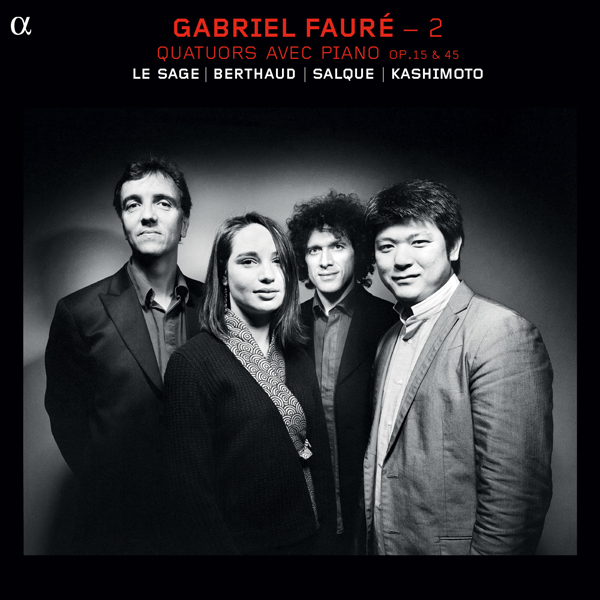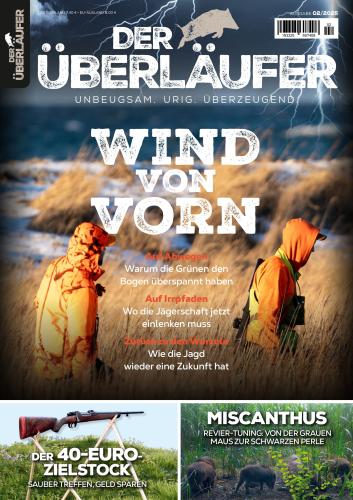
Gabriel Faure Vol. 2: Piano Quartets, op. 15 & 45 – Eric Le Sage, Daishin Kashimoto, Lise Berthaud, Francois Salque (2012)
FLAC (tracks) 24-bit/88,2 kHz | Time – 01:04:01 minutes | 0,98 GB | Genre: Classical
Studio Master, Official Digital Download – Source: Qobuz | Booklet, Front Cover | © Alpha Classics / Outhere Music
Between 1875 and his death in 1924, Fauré produced ten or so compositions that are among the jewels of the French chamber repertoire, written at a time when opera and symphonic music were the predominant genres.
The international artist Eric Le Sage, who is a specialist in this repertoire, continues his exploration of the complete chamber music with piano of Gabriel Fauré, accompanied by a fine team of first-rate artists.This second volume, expertly recorded by Jean-Marc Laisné in the wonderful setting of the MC2 Auditorium in Grenoble, shows extraordinary energy and elegance. The first volume was awarded the highest ratings by the music magazine Classica in December 2011.
Fauré’s two piano quartets are characterized by haunting melodies, inventive voice handling, clever musical development, witty surprises and the feeling of balance. These conspire to achieve the sort of beauty of effect that can make a musical work one’s favourite. They’re certainly mine. For me it was love at first hearing. This was aided by my first encounter beiong courtesy of the Domus ensemble on Hyperion. That disc remains my reference; I haven’t encountered a better one yet.
The two works are very similar in structure. Both host an archetypal Romantic Allegro, a “French” scherzo (which was a Fauré speciality), a lyrical slow movement and a vigorous finale. Despite their similarity, they look good together, and are often paired on disc. The present recording is done by a group of young musicians that do not form a “named” quartet. Yet their performance has all the balance and smoothness of a permanent ensemble.
The presentation of the first movement of the First Quartet has weight, and sounds more purposeful than natural. The voice of the piano is deep yet somewhat muted; the more open and transparent, albeit more shallow, piano sound of the Domus creates a more sincere and fresh feeling. This pushes the piano back toward a more accompanying role and the music becomes more string-dominated. The quicksilver second movement leans more towards rustic than elfin. The music has good momentum and flies forward, light and elegant, with touches of believable yearning. The slow movement is lugubrious, yet with rays of light and hope, sweet memories and Romantic longing. The performers do not plunge too deep into despair; their reading is songlike and expressive with a slight excess of pressure. The haunting coda is done beautifully. The finale is a distressed gallop, a whirlwind where grand Schumann-style melodies swirl and spin, a wild yet graceful waltz. The discourse isn’t always crystal clear in this recording; there is certain murkiness in places. On the other hand, the drive is good, and the feeling is definitely ecstatic.
The Second Quartet opens with one of those rainfall motifs that frequent Fauré’s first movements. There is lyrical tenderness, Brahmsian heartache and Debussian pastel sonorities. The performers approach it rather physically and remove the veil of mystery, making it closer to Ravel than Debussy. They put the first theme “in your face”, with pressure and angst, yet their second subject is warm and soothing. The shaded, viscous feeling of the middle section is well projected, and the beautiful coda has elegance and grandeur. The scherzo is urgent and well articulated, brisk and sharp, with good weight, though lacking in nuance. The slow movement moves from a tender lullaby to an ecstatic love-song and back. The performance is clear-cut, very eloquent and singful, balanced and warm. It radiates unhurried, confident nobility. The finale is another unhinged ride – a black, wild Mephisto-waltz. It closes the parentheses with the first movement – once more we feel the wind and the rays of the sun, see the rainbow and hear the splashing rain. The performers do not assume a breakneck speed – 8:25 comparing to 7:53 of Domus. Even so the momentum is well judged. This is a pressurized and tempestuous approach. Again, the sound of the piano is a tad remote. I prefer the drier and more glittering piano sound of the Domus which creates a more brilliant effect and better captures that sense of fresh spring water.
All in all, these are faithful performances without eccentricity. There’s good balance within the group and the music-making is expressive and engaging. The approach is unified, and the overall architecture clear. I find the presentation somewhat down-to-earth, lacking some of the ethereal moments that make this music so special. The recording is spacious and detailed.
The artful booklet tells us about the history of creation of the works plus a long analysis of Paul Verlaine’s poem The Art of Poetry. Regrettably there’s nothing about the performers. -Oleg Ledeniov, MusicWeb International
Tracklist:
Gabriel Fauré (1845-1924)
Quatuor pour piano n° 1 en ut mineur, Op. 15
1 I. Allegro molto moderato 09:43
2 II. Scherzo – Allegro vivo 05:37
3 III. Adagio 07:10
4 IV. Allegro molto 08:09
Quatuor pour piano n° 2 en sol mineur, Op. 45
5 I. Allegro molto moderato 10:54
6 II. Allegro molto 03:15
7 III. Adagio non troppo 10:48
8 IV. Allegro molto 08:25
Personnel:
Éric Le Sage, piano
Daishin Kashimoto, violin
Lise Berthaud, viola
François Salque, cello
Download:
mqs.link_GabrielFaurVl.2EricLeSageDaishinKashimtLiseBerthaudFranisSalque2012Qbuz2488.2.part1.rar
mqs.link_GabrielFaurVl.2EricLeSageDaishinKashimtLiseBerthaudFranisSalque2012Qbuz2488.2.part2.rar




















![Daishin Kashimoto, Emmanuel Pahud, Paul Meyer, Zvi Plesser, Eric Le Sage - Vienne 1900 (2020) [FLAC 24bit/88,2kHz] Daishin Kashimoto, Emmanuel Pahud, Paul Meyer, Zvi Plesser, Eric Le Sage - Vienne 1900 (2020) [FLAC 24bit/88,2kHz]](https://getimg.link/images/imgimgimg/uploads/2020/09/FAfbjUd.jpg)
![Eric Le Sage - Brahms: Œuvres pour piano à quatre mains (Intégrale musique de chambre), Vol. 10 (2022) [FLAC 24bit/96kHz] Eric Le Sage - Brahms: Œuvres pour piano à quatre mains (Intégrale musique de chambre), Vol. 10 (2022) [FLAC 24bit/96kHz]](https://imghd.xyz/images/2022/07/04/ciczdpp6i5ndc_600.jpg)
![Eric Le Sage, Daishin Kashimoto - Concert de Chausson - Quintette de Vierne (2024) [FLAC 24bit/192kHz] Eric Le Sage, Daishin Kashimoto - Concert de Chausson - Quintette de Vierne (2024) [FLAC 24bit/192kHz]](https://imghd.xyz/images/2024/09/28/7680aa6f62c5410a8fef964552e281e8-694008331889559551.webp)
![Gabriel Faure Vol. 5: Pieces for violin and piano - Eric Le Sage, Daishin Kashimoto (2013) [Qobuz FLAC 24bit/88,2kHz] Gabriel Faure Vol. 5: Pieces for violin and piano - Eric Le Sage, Daishin Kashimoto (2013) [Qobuz FLAC 24bit/88,2kHz]](https://getimg.link/images/imgimgimg/uploads/2018/02/lpoiskC.jpg)
![Gabriel Faure Vol. 1: Works for cello and piano & trio Op. 120 - Eric Le Sage, Francois Salque, Paul Meyer (2011) [Qobuz FLAC 24bit/88,2kHz] Gabriel Faure Vol. 1: Works for cello and piano & trio Op. 120 - Eric Le Sage, Francois Salque, Paul Meyer (2011) [Qobuz FLAC 24bit/88,2kHz]](https://getimg.link/images/imgimgimg/uploads/2018/02/aQp0jL1.jpg)
![Eric Le Sage - Schumann Project: Complete Chamber Music With Piano (2012) [Qobuz FLAC 24bit/88,2kHz] Eric Le Sage - Schumann Project: Complete Chamber Music With Piano (2012) [Qobuz FLAC 24bit/88,2kHz]](https://getimg.link/images/imgimgimg/uploads/2018/01/UxpTvCY.jpg)
![Lise Berthaud - Berlioz: Harold en Italie (2014) [FLAC 24bit/96kHz] Lise Berthaud - Berlioz: Harold en Italie (2014) [FLAC 24bit/96kHz]](https://imghd.xyz/images/2023/04/23/0747313329779_600.jpg)
![Eric Le Sage - Jardins suspendus (2022) [FLAC 24bit/96kHz] Eric Le Sage - Jardins suspendus (2022) [FLAC 24bit/96kHz]](https://imghd.xyz/images/2022/11/27/ul29tux7wlwgb_600.jpg)
![Francois Salque - Brahms - Sonates pour violoncelle et piano Vol. 7 (2020) [FLAC 24bit/96kHz] Francois Salque - Brahms - Sonates pour violoncelle et piano Vol. 7 (2020) [FLAC 24bit/96kHz]](https://getimg.link/images/imgimgimg/uploads/2020/09/RXXiEw0.jpg)
![Pacifica Quartet - Dmitri Shostakovich and his Contemporaries: The Soviet Experience Vol. 1-4 (2011-2013) [24bit FLAC] Pacifica Quartet - Dmitri Shostakovich and his Contemporaries: The Soviet Experience Vol. 1-4 (2011-2013) [24bit FLAC]](https://getimg.link/images/imgimgimg/uploads/2017/07/ntIbtOp.jpg)
![Ludwig van Beethoven - Complete Violin Sonatas - Daishin Kashimoto, Konstantin Lifschitz (2014) [Qobuz FLAC 24bit/96kHz] Ludwig van Beethoven - Complete Violin Sonatas - Daishin Kashimoto, Konstantin Lifschitz (2014) [Qobuz FLAC 24bit/96kHz]](https://getimg.link/images/imgimgimg/uploads/2017/03/ZreLt2q.jpg)
![Gabriel Faure Vol. 4: Duos and Trios with piano - Eric Le Sage, Alexandre Tharaud, Emmanuel Pahud, Pierre Colombet, Raphael Merlin (2013) [Qobuz FLAC 24bit/88,2kHz] Gabriel Faure Vol. 4: Duos and Trios with piano - Eric Le Sage, Alexandre Tharaud, Emmanuel Pahud, Pierre Colombet, Raphael Merlin (2013) [Qobuz FLAC 24bit/88,2kHz]](https://getimg.link/images/imgimgimg/uploads/2018/02/W6ecuQe.jpg)
![Maria Callas - Remastered The Complete Studio Recordings 1949-1969 (2014) [Qobuz FLAC 24bit/96kHz] Maria Callas - Remastered The Complete Studio Recordings 1949-1969 (2014) [Qobuz FLAC 24bit/96kHz]](https://getimg.link/images/imgimgimg/uploads/2018/12/Vw7IHlv-1.jpg)
![Lise Berthaud, Adam Laloum - Schumann, Schubert, Brahms (2013) [Qobuz FLAC 24bit/96kHz] Lise Berthaud, Adam Laloum - Schumann, Schubert, Brahms (2013) [Qobuz FLAC 24bit/96kHz]](https://getimg.link/images/imgimgimg/uploads/2019/01/7i8JNcV.jpg)